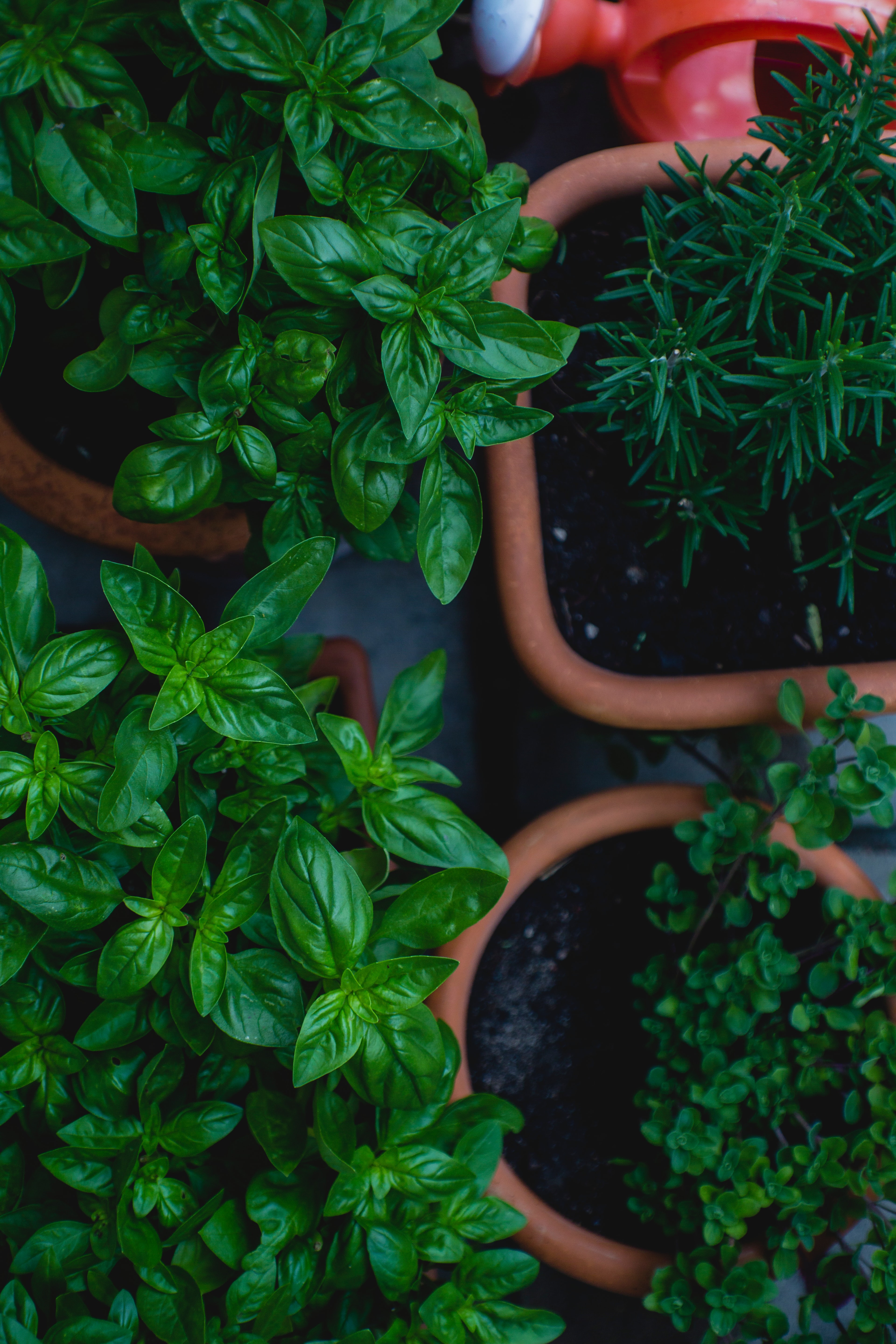Incorporating Herbs in Your Everyday Diet
go.ncsu.edu/readext?814381
en Español / em Português
El inglés es el idioma de control de esta página. En la medida en que haya algún conflicto entre la traducción al inglés y la traducción, el inglés prevalece.
Al hacer clic en el enlace de traducción se activa un servicio de traducción gratuito para convertir la página al español. Al igual que con cualquier traducción por Internet, la conversión no es sensible al contexto y puede que no traduzca el texto en su significado original. NC State Extension no garantiza la exactitud del texto traducido. Por favor, tenga en cuenta que algunas aplicaciones y/o servicios pueden no funcionar como se espera cuando se traducen.
Português
Inglês é o idioma de controle desta página. Na medida que haja algum conflito entre o texto original em Inglês e a tradução, o Inglês prevalece.
Ao clicar no link de tradução, um serviço gratuito de tradução será ativado para converter a página para o Português. Como em qualquer tradução pela internet, a conversão não é sensivel ao contexto e pode não ocorrer a tradução para o significado orginal. O serviço de Extensão da Carolina do Norte (NC State Extension) não garante a exatidão do texto traduzido. Por favor, observe que algumas funções ou serviços podem não funcionar como esperado após a tradução.
English
English is the controlling language of this page. To the extent there is any conflict between the English text and the translation, English controls.
Clicking on the translation link activates a free translation service to convert the page to Spanish. As with any Internet translation, the conversion is not context-sensitive and may not translate the text to its original meaning. NC State Extension does not guarantee the accuracy of the translated text. Please note that some applications and/or services may not function as expected when translated.
Collapse ▲
Reading Time: 1 min 41 secs
Herbs are a great way to infuse the everyday diet with flavor, health benefits, and nutrition. If you are new to herbs, this article will help you to get started by explaining a few herb basics.
In botany, an herb is described as a herbaceous plant that lacks a woody stem and dies to the ground each winter. Herbs are also the part of the plant that is used to flavor food or produces fragrance. The term herb is often used interchangeably with the word “spices”. However, the terms differ. Spices come from roots, flowers, fruits, seeds, or bark, often from warm and tropical climates. While they can have an herbaceous nature, spices take on different culinary profiles.
Getting started with herbs is easy. Here are a few beginner tips to try or save for later:
- Growing: Herbs are great for beginner gardeners. Many herbs grow easily in containers, small spaces or can make great additions to a flowerbed. Choose and group herbs based on the amount of light, space, and water needed. For a simple guide to choosing the best herbs for a garden, check out this great guide from our colleagues at N.C. Cooperative Extension in Forsyth County.
- Harvesting: Harvest herbs when the plant has enough foliage to maintain growth. Remember, up to 75% of the plant’s growth can be harvested at one time. Harvest herbs before flowering occur for optimal taste. Consider allowing herbs to produce seeds and save them for the next season. We welcome questions about plants and gardening at our local N.C Cooperative Extension offices.
- Cooking: Explore herbs as an alternative to salt or other sodium-based commercial seasonings. Herbs present many culinary flavor profiles, including savory, sweet, spicy, bitter, sour, and more. Learning which herbs pair best with a dish is challenged. The Quick Flavoring Guide offers suggestions to explore new herbs and spices. Did you know that dried herbs are usually 3 to 4 times stronger than fresh herbs?
- Preserving: One of the best ways to enjoy herbs through all seasons is preserving. The most traditional form of preservation is drying, which is achieved by air-drying, oven-drying, or using a dehydrator. The National Center for Home Food Preservation provides excellent tips on ways to preserve herbs. When growing herbs at home, remember that the best time to harvest herbs for drying is in the budding stage. Harvest just before the flowers began to open.
Did you find these tips helpful? Let us know how you are incorporating herbs into your everyday diet on our Facebook page!
Credits:
Davis & Evans (n.d.). Growing herbs [leaflet].
Address & Harris (2014). So easy to preserve. 6th ed. Bulletin 989. Cooperative Extension Service. Athens Georgia. The University of Georgia.
NC State University (2019). Harvesting and preserving herbs for the home gardener.
Spicer, F. (2003) Herbs vs. spices. Iowa State University.
University of Wisconsin (2021). Herb gardening.
Davis & Evans (n.d.). Growing herbs [leaflet].




